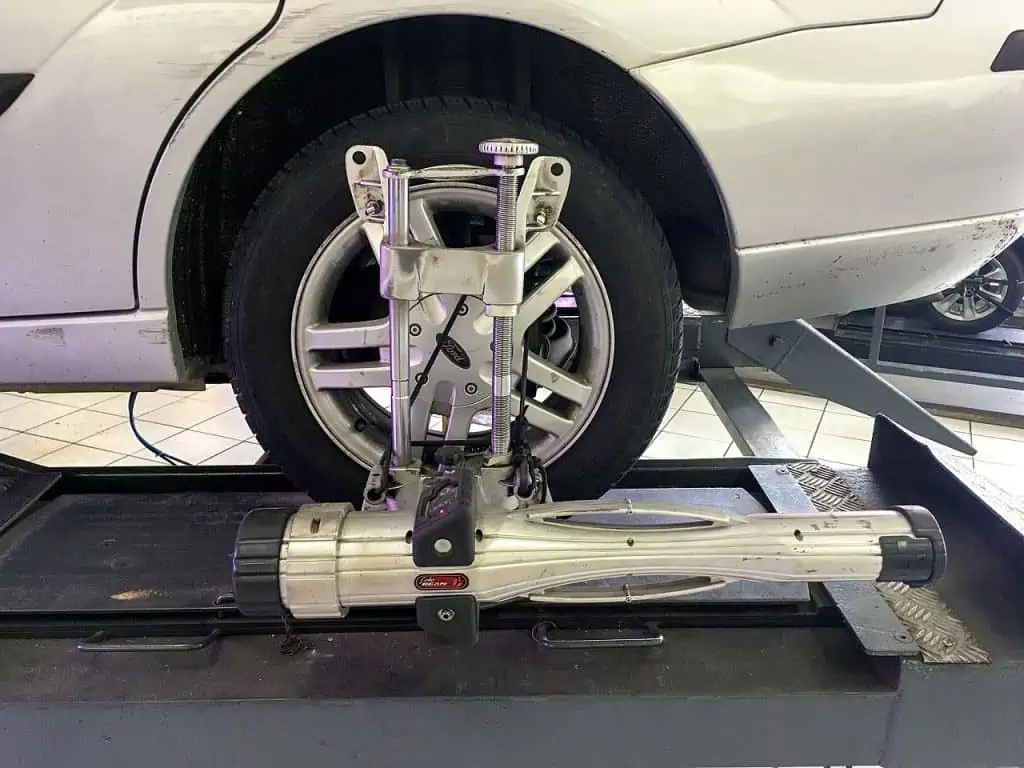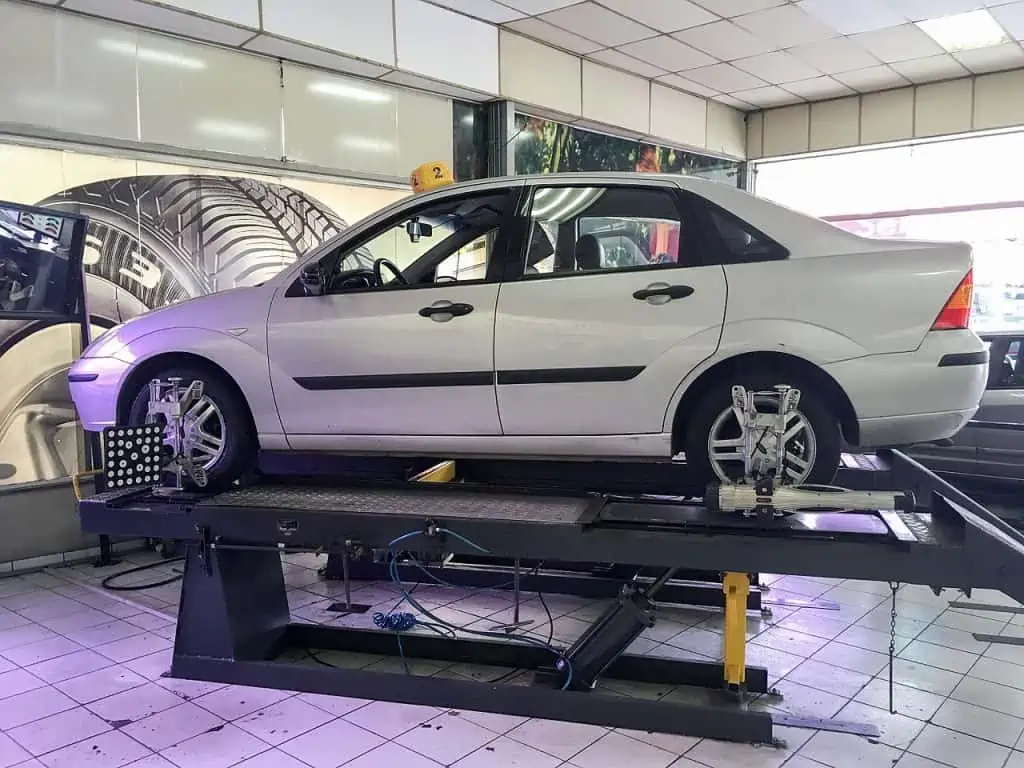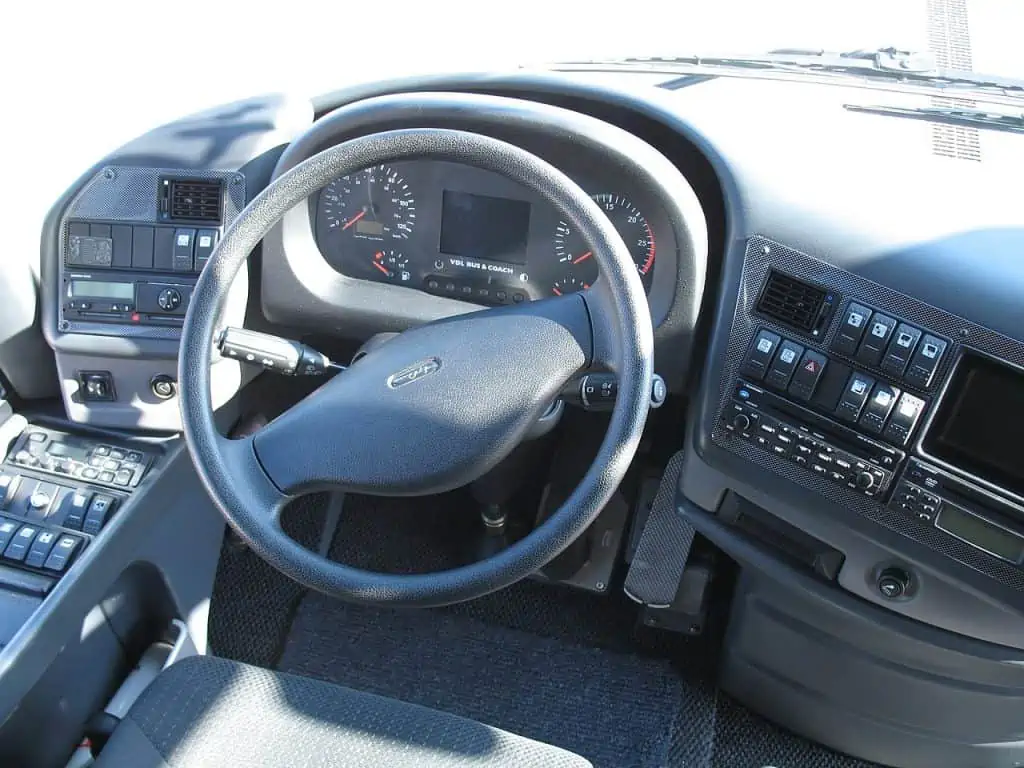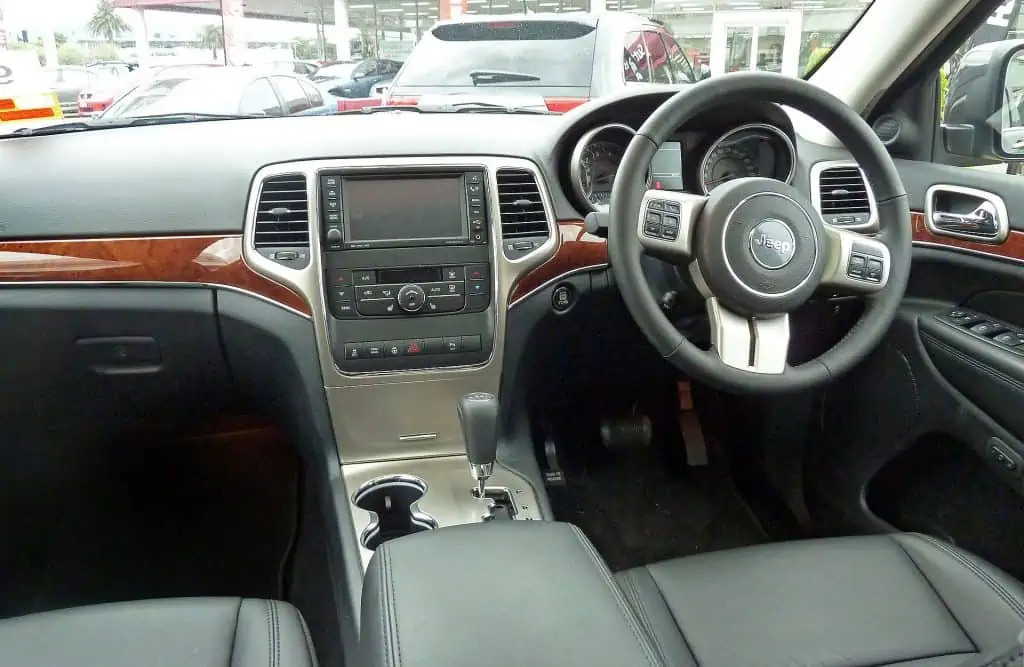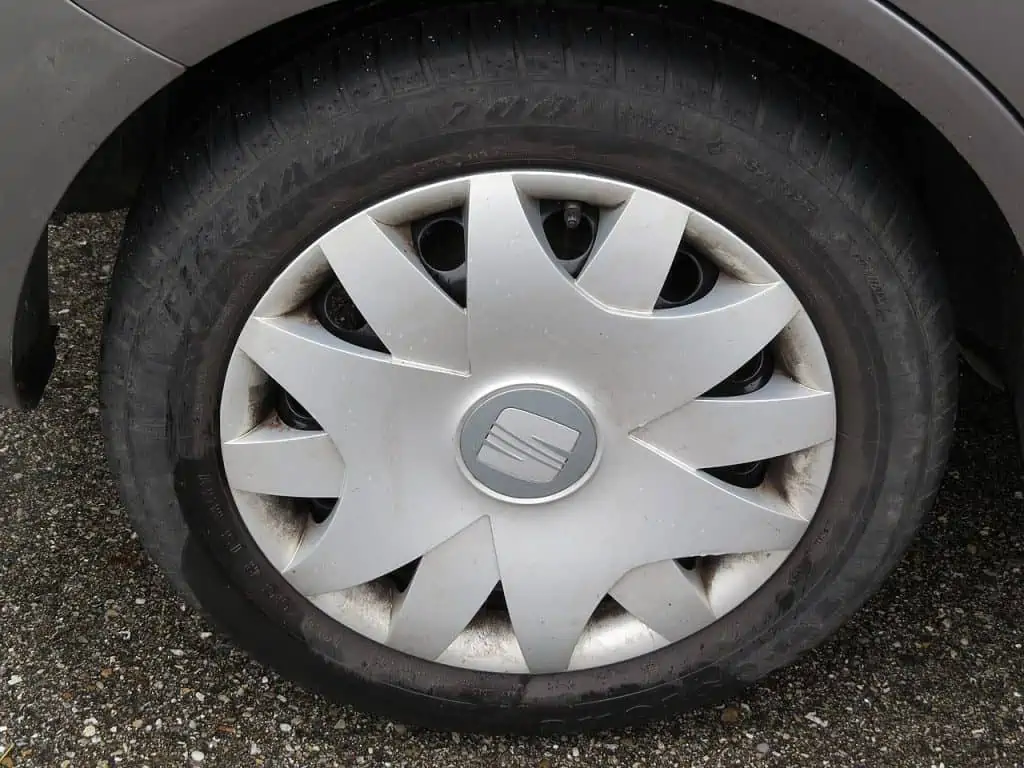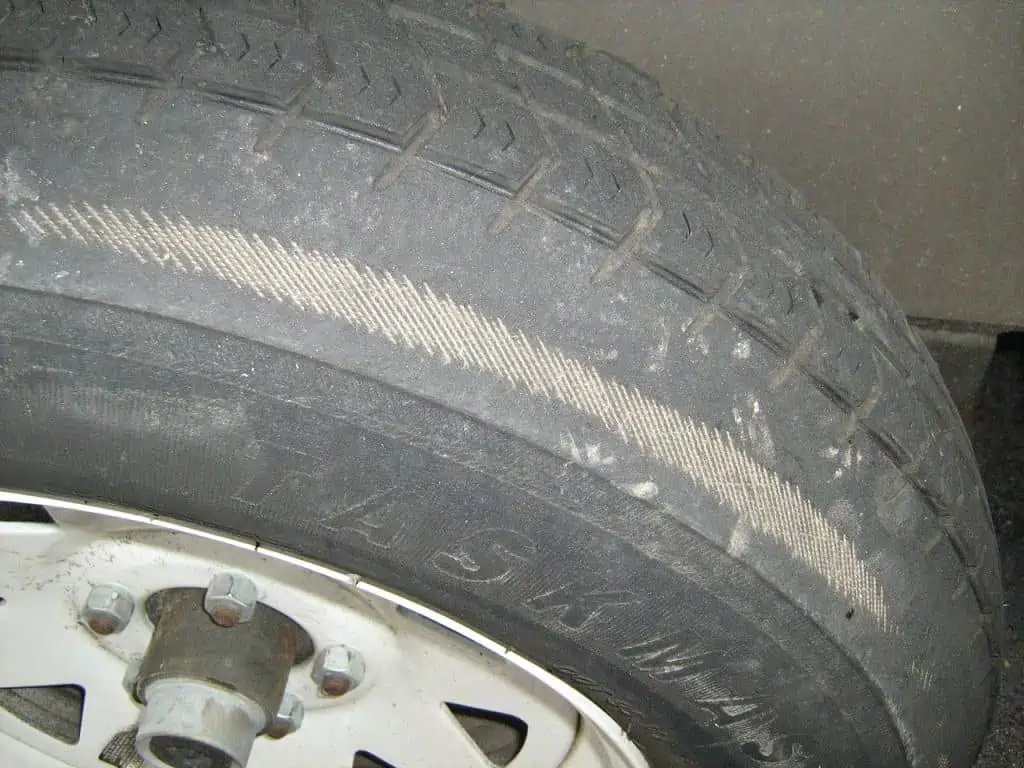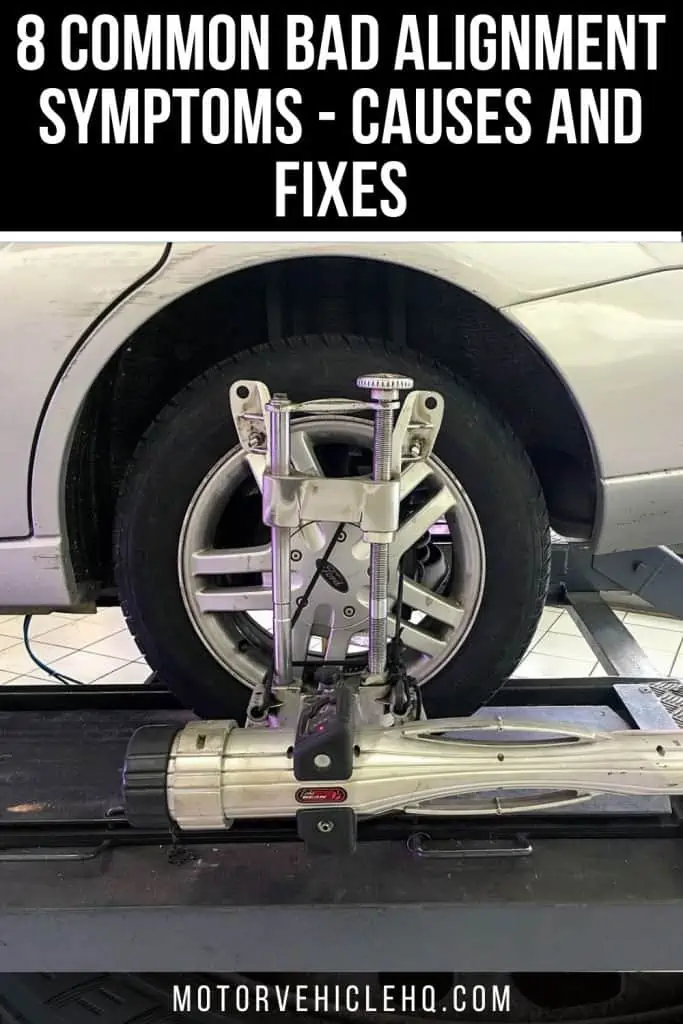With wheels that are properly aligned, cars operate smoothly and driving is generally safe. Nevertheless, external road encounters frequently cause wheels to become out of alignment. The suspension system may start to shift soon as a result of those potholes. So what exactly are the bad alignment symptoms?
You can detect that your car has a bad alignment by several signs. How dangerous is it to drive a car that exhibits bad alignment symptoms? Numerous risks are there, and the number of risks increases as a result of the tires’ accelerated tire wear.
The steering wheel of the car could start tugging in one direction or another due to uneven wear. Such a problem can eventually lead the car to lose traction on surfaces like pavement. Additionally, the irritating vibrations that can be felt around the steering wheel might make the driver feel uneasy.
The bad alignment symptoms include steering vibration, crooked steering, vehicle wandering, drifting to one side, and difficulty centering the steering wheel.
One of the most crucial actions a driver can perform is to make sure the car is safe. As an illustration of a safety issue, dealing with faulty vehicle alignment can be exceedingly difficult and, if not resolved right away, might have devastating effects.
Vehicle alignment is adjusting the wheel’s directions and angles to reduce friction and delay uneven tire wear. With proper alignment, you not only make sure that your car is safe but also that it will last longer and have better gas efficiency.
This article gives you a thorough overview of all the signs you can see so you can determine when it’s time to align your car.
What Exactly Is an Alignment?
It’s important to discuss what aligning a pair of wheels implies for your car before examining the bad alignment symptoms. So why is alignment so crucial in the first place?
Wheel alignment of a Ford Focus by Mike Peel / CC BY-SA 4.0. To reduce friction and postpone uneven tire wear, vehicle alignment involves changing the directions and angles of the wheels. With proper alignment, you can increase the longevity and fuel efficiency of your car in addition to its safety.
The procedure of wheel alignments is commonly referred to as “tracking,” as the word implies. Aligning, adjusting, or maintaining the angle of the wheels in their most optimum position is a standard maintenance process.
The angle of the wheels is adjusted or aligned for a variety of reasons, including:
- Ensures that the path taken by your car is always true and straight.
- Prolongs the life of your tires and prevents excessive tire tread wear.
- Changes your car’s driving characteristics, for example, by making it suitable for off-roading or racing.
- Improves the comfortable and slick driving dynamics of your car.
- Decreases rolling resistance, which can significantly cut fuel usage.
- Prevents putting unnecessary strain on the suspension and steering or accelerating wear.
- Increases vehicle safety through predictable and dependable handling.
Wheel alignments are typically performed by the majority of us without realizing their numerous advantages or long-term value. When done properly, you’re left with a car that is not only significantly safer but also more enjoyable to drive and more comfortable.
As it places the least amount of strain on your suspension and steering components, it could also save you a ton of money on future repairs or servicing.
Why Is Sufficient Alignment Important for a Car?
To ensure safety and perform as intended by the manufacturer, your vehicle must be as precise as it can be.
Improper alignment is one of the easiest things for your people to get wrong. Many factors, including your driving style, the state of the road, running into any larger bumps, and minor to major auto accidents, can cause the alignment to be off.
Correct alignment entails adjusting the direction and wheel angles of your car following the manufacturer’s recommendations.
You will experience several issues if your vehicle is not properly aligned. affecting the overall performance and, in some cases, causing significant harm. For instance, you will notice a significant decrease in your vehicle’s overall gas mileage if it is not aligned.
Because there is a lot of friction created when tires contact roads, alignment is necessary to ensure proper tire-road contact. This friction can rise significantly in the absence of proper alignment, making your engine work harder to generate more power and burning more gas as a result.
Incorrect alignment of the vehicle will also affect your overall safety because you won’t be able to control it properly. In certain circumstances, the car could tip over to one side, which is risky, especially if you’re driving on the freeway.
Last but not least, alignment is crucial to extending the lifespan of your car, particularly when it comes to the drivetrain and suspension system. You’ll notice some premature and uneven tire wear if the car’s alignment is off.
Wheel alignment of a Ford Focus sedan by Mike Peel / CC BY-SA 4.0. Wheel alignments are frequently referred to as “tracking,” as the word suggests. A typical maintenance procedure involves aligning, adjusting, or maintaining the angle of the wheels in their ideal position.
This is due to the vehicle leaning into one side more than the other, which will put more strain on that side and shorten its lifespan.
What are the Common Bad Alignment Symptoms In a Car?
Many of the symptoms and telltale signs that your car has experienced a bad alignment can appear right away. Even at fairly low speeds, you can still see them clearly as you drive.
The chances of having a bad accident can easily increase as they can quickly get worse. A bad alignment might make driving your car more difficult.
For instance, it may lessen the effectiveness of your brakes and impair your ability to steer around obstacles. Additionally, it is much more uncomfortable, unpredictable, and ineffective.
In other words, a bad alignment needs to be fixed right away, without any hesitation. As soon as you notice these symptoms, you should have this done at your neighborhood tire shop or mechanic.
1. Vehicle Veers or Pulls to One Side
This is right away the deadliest and most notable bad alignment symptom. Your car is pulling off to the side, to the left, or to the right as you are driving. The car keeps dragging to either side without your input, even though you’re keeping the steering wheel straight.
It will be difficult to maintain a straight line of motion in your car, which could be problematic for those lengthy highway drives. Sometimes pulling or veering can be so severe that it forces your car to cross over into the opposite lane.
You can find out for yourself how bad the veering is. Find a road that is flat, straight, and most importantly, empty. To move your car forward, take your hands off the wheel and gently open the throttle. Check to see if there is any obvious drifting to the left or right.
Repeat this test if necessary because poor road conditions may also cause your car to veer or pull to one side. Otherwise, you have wheels that need to be realigned. Observe how far your car pulls to the side while you’re there. The alignment gets worse the more it pulls.
2. A Crooked and Off-Center Steering Wheel
You can also spot a bad alignment by looking at where your steering wheel is positioned. Naturally, your steering wheel should stay in the middle when you’re driving on a flat, straight road. The tilt of the wheel’s logo or the relative placement of the spokes is two indicators of this.
Driving down a flat, straight road with the steering wheel slightly off-center is a sign that your bad alignment is negatively affecting your steering. It’s not ideal to be even a few degrees off-center because it can make steering and turn more difficult.
3. The Steering Wheel Feels Loose
Once more, a bad alignment can affect how responsive your steering is. The steering should feel responsive, responsive, and stable when your wheels are properly aligned. Because of the bad alignments, the steering now feels slack and vague when turning.
The steering response may also be delayed as a result. For instance, you might turn in quickly, but your car won’t react for a while. Slow direction changes would make your car slightly slower while negotiating corners, which is extremely risky.
All wheel alignment of a Ford Focus by Mike Peel / CC BY-SA 4.0. Your overall safety will be impacted by the vehicle’s incorrect alignment because you won’t be able to control it properly. The car could tip over to one side under certain conditions, which is dangerous, especially if you’re driving on the freeway.
4. The Steering Wheel Produces Abnormal Vibrations
This provides more evidence that a bad alignment can be detected right away through the steering wheel. The steering wheel should typically feel smooth, but occasionally it should give you feedback about the surface of the road. Your wheel shouldn’t ever vibrate, shake, or tremble.
If your car has a bad alignment, it may not be tracking correctly. Or, it could have damaged or worn out important parts of your car’s suspension and steering system. You will be able to feel vibrations and trembling through the steering wheel in either case.
5. The Steering Wheel Fails to Return to the Middle When Released
Almost every vehicle with power steering should have the steering wheel return to the center position after making a turn. No matter how far to the left or right it has swung, the wheel will naturally slowly turn back to its center.
If after making a turn, the steering wheel does not return to the center, this may indicate a bad alignment because the vehicle has not tracked properly. As with a car that is pulling or veering to one side, you can verify this for yourself.
6. Tires Making Squeaking Sounds
The noise coming from your tires shouldn’t be there. While driving, you should be able to hear it “roar” and rumble at the very least as it rotates quickly. In addition, unpleasant noises like screeching or squealing should raise the suspicion that your alignment may be off.
Your tires would be the first casualty of a bad alignment. Treadwear that is accelerated or uneven can be caused by poor tracking and adjustments. They would go bald much sooner than typical tires do. The squealing will eventually get worse because there will be fewer treads to rely on.
7. Treads On the Tires Wear Unevenly
As we said earlier, misaligned wheels will also cause the tires to wear out more quickly. However, it would also cause uneven tread wear. You can tell that some parts of your tires are wearing out more quickly than others by looking at them.
To verify this, you can gauge the tread depth on the tires’ inner and outer edges. It will depend on the precise offset of the camber, toe, or caster specs. You might notice that the tires wear out much more quickly on the inner half depending on how far off they are.
8. An Abnormal Increase In Fuel Consumption
This one might be able to get your attention even if you’ve managed to miss any of the aforementioned symptoms. Your car would roll smoothly and unhindered if your alignment was done correctly like it was on a bed of butter.
On the other hand, a bad alignment would greatly increase your wheels’ rolling resistance. This is used to indicate how much harder it is to rotate the wheels. Your car will need to burn a lot more fuel to start as the difficulty increases.
What are the Common Causes of Bad Alignment Symptoms In Cars?
Now that you know what will happen to you if your car has a bad alignment, how about we talk about what caused it? Without a direct influence, wheel alignments do not naturally deteriorate.
Steering wheel by Lukas 3z / CC BY-SA 4.0. Your car might not be tracking properly if it has a bad alignment. Alternatively, it might have worn out or harmed critical components of the car’s suspension and steering system. In either scenario, you will be able to feel trembling and vibrations through the steering wheel.
Typically, it might be the result of your poor or reckless driving. Or perhaps a little too much navigating speed bumps and bumpy roads.
Here are a few of the most typical reasons why your wheels might be out of alignment:
- Driving quickly over speed bumps or potholes.
- Driving over curbs frequently or hard.
- Impact, especially when moving quickly, against larger road debris
- Any component of the suspension, steering, wheels, or axles can be damaged in an accident, no matter how minor.
- Aftermarket alterations, like lifting or lowering your car beyond what the manufacturer intended
- Driving for an extended period with under or over-inflated tires
- Operating with faulty shock absorbers, struts, or other suspension parts.
- Using tires that don’t fit your wheels properly or are the incorrect size.
The good news in this situation is that frequent alignment jobs could mitigate the majority of these direct or indirect causes of bad alignment symptoms. Even those of us who are cautious behind the wheel or don’t drive frequently can’t avoid needing an alignment.
Having your wheels aligned when it’s time, or whenever it’s scheduled, will keep you from having problems.
How are Car Alignments Carried Out?
In the past, wheel alignments were done intuitively. With the aid of any measuring devices and acquired experience, the mechanic would set the angle of the wheels as accurately as possible.
After that is finished, they will drive your car and note its driving characteristics. All of this is carried out with skill and intuition. It was more likely to have a bad alignment back then, depending on your mechanic.
However, in modern times, even a low-cost wheel alignment is extremely high-tech:
- Your car will be driven up a ramp or lift, and the wheels would then be secured with clamp-like devices.
- These clamps contain sensors that allow data to be transferred back to a computer. It can measure your car’s current alignment to an incredibly fine degree.
- A mechanic is present throughout the process, and when necessary, they will adjust the wheels based on the data they see on the computer. They’ll make adjustments until the alignment is ideal.
- The best alignment angles for your car will primarily be determined by the specifications set forth by the manufacturer.
- The mechanic will also make sure that the suspension, steering, wheels, axles, and tires are all in good working order. For instance, check to see if your suspension is worn out or if the steering wheels have any play in them.
- You could request a printout from the mechanic after the alignment is finished. This can describe the wheel alignment adjustments made to your car before and after.
Because the car has not been tracked properly, if the steering wheel does not come back to the center after a turn, there may be an alignment issue. You can check this out for yourself, just like when a car pulls or veers to one side.
How Often Should Vehicle Alignment Be Done?
A color wheel alignment should be done once every two to three years, according to an automotive expert. Remember that depending on the manufacturer of your car, this period may vary greatly.
The best course of action is to consult your vehicle’s owner’s manual to determine how frequently you should align your car.
The frequency of wheel alignment also depends on your specific situation, so keep that in mind. For instance, you should check the alignment of your car if it was recently in a collision to make sure it’s still correct.
Any strange bumps in the road that you might unexpectedly encounter without warning and that could affect your vehicle’s alignment are another factor.
We advise you to take your car to the closest repair facility as soon as you notice any indication of a bad alignment to have it aligned.
We can all agree that alignment corrections can be costly, but that doesn’t take into account what might occur if the suspension system or any other important parts are damaged.
Nothing is worse than putting your life in danger in a collision simply because you put off checking your car’s alignment.
How Much Will It Cost to Align Your Vehicle?
You could learn more about the cost of wheel alignment by becoming more knowledgeable about the front and rear wheel alignment symptoms. When your car’s wheel alignment is off, getting it fixed and enlisting the help of a mechanic becomes a top priority.
You can quickly look for mechanics who handle “wheel alignment near me” if it appears that you have no idea how to check a car’s alignment. Depending on the extent of the damage and your location, the cost of realigning your car’s wheels varies.
The type of alignment and the number of wheels that need to be aligned determine the cost of vehicle alignment.
For instance, you might have to fork over between $50 and $75 if you want to have the front end of your car, which only includes the front wheels, aligned.
On the other hand, the cost may reach as high as $100 to $150 if you’re interested in applying the four wheels.
Of course, the location or repair shop where you have the work done can have an impact on the overall cost as labor costs vary greatly depending on the mechanic.
Estimated Costs for the Most Popular Alignment Service Stations
Here is a useful list of what top national companies are expecting wheel alignment to cost.
1. At Boys Pep
This business offers reasonable prices for top-notch wheel alignment services. The “One-time” wheel alignment option has an average price of $85, and it is an option you can choose. With this, Pep Boys offers a three-month warranty to customers.
As a result, you can be sure that your car will function properly for up to 4,000 miles. However, you can choose to sign up for the “One-year” service, which typically costs $110 per year. With a wheel that is properly aligned, your car can travel 12,000 miles with this.
A car tire by GT1976 / CC BY-SA 4.0. Your tires shouldn’t be making that noise. You should be able to hear it “roar” and “rumble” as it rotates quickly while driving. Along with that, unpleasant noises like screeching or squealing should cause you to question if your alignment is accurate.
2. At Good Year
The average price for a single service at Goodyear is $100 for wheel alignment.
3. At Firestone
The price for a Firestone wheel alignment starts at $80 and includes a one-year warranty. However, you can choose the lifetime package, which typically costs $170.
4. At Walmart
At this service station, the front wheels of your car can be aligned for an average cost of $50. All four wheels need to be aligned, which costs on average $75.
5. At Mr. Tire
From Mr. Tire Company, a wheel alignment typically costs $50. Therefore, it would be beneficial if you brought your vehicle here for quick repair when you noticed problems with the wheel alignment.
6. At NTB
Small car wheel alignments typically cost $90 for a single alignment, $125 for a yearly alignment, and $180 for a lifetime alignment (a 3-year alignment). Trucks appear to cost more because they require more work.
Truck wheel alignment ranges in price from $105 to $235, and each package has a specific warranty period. You can rest easy knowing that your car will run smoothly once the wheels are aligned.
7. At Sears
You should think about Sears when looking for “wheel alignment cost near me,” as they provide 6-month warranty service for an average price of $85. For an average price of $115 and $165, respectively, you can also access the one-year service or the three-year service.
What Is the Time Taken to Complete Car Alignment?
The length of time it takes the mechanic to perform the wheel alignment is one of the most frequent queries we get from various customers.
A four-wheel alignment or a two-surprising wheel alignment typically takes one hour to complete.
Wheel alignment won’t require much of a wait time, but there are some circumstances where it might.
If the mechanic found a problem with the steering bushings, track rod, or suspension system, he might have to replace these parts, which takes more time. Therefore, if you are aware that your car has suspension system problems, be ready to put in more time.
Is It Safe to Keep Driving with Bad Alignment Symptoms On Your Car?
Even if your car’s wheels are out of alignment, you can still start driving even though it won’t let you go very far.
However, auto experts never advise continuing to drive your car, particularly if the alignment is poor.
As we previously mentioned, bad alignment may cause your tires to become uneven too soon, which could put you in danger.
The tires will deteriorate more quickly if the wheels are out of alignment. It would, nevertheless, result in uneven tread wear. Looking at your tires will reveal which parts are deteriorating more quickly than others.
Additionally, bad alignments can lead to additional issues with the suspension system of your car, which will increase how frequently you need to fill up. Therefore, skipping wheel alignment is never a wise choice.
How Soon Will Bad Alignment Cause Tires to Wear?
Although we have been mentioning that bad alignment can lead to quick tire wear, the question of how quickly tires will wear with bad alignment persists.
Unexpectedly, even a minor alignment problem with your car could cause the tires to lose thousands of miles from their lifespan. Additionally, serious wheel alignment problems can seriously harm your tires in just a few hundred miles.
By placing more strain and stress on the wheels, which causes more friction, the car’s lifetime is significantly impacted and reduced when it keeps swaying back and forth and leaning more to one side than the other.
What Distance Can You Travel Without an Alignment?
That’s yet another excellent query we frequently got. While the length of time it takes to align a vehicle varies greatly depending on how bad the alignment is, automotive experts never advise driving your car more than 500 miles when you have a bad alignment.
Of course, suppose your car exhibits severe symptoms, such as shaking or vibration in the steering. In that case, it might not be a good idea to keep driving this car; instead, you should take it to the closest repair facility right away to have the alignment done.
Yes, this may take some time and effort, and we are aware that you may be busy, but consider the other possibilities and potential consequences if you don’t complete the alignment, which will cost you much more in the long run.
The Conclusion
One of the most crucial aspects to pay attention to when operating any vehicle is proper alignment. You run the risk of crashing, endangering both your life and the life of the passenger. Along with the reduced gas mileage, you’ll notice a significant decline in your car’s overall performance.
Fortunately, there are some signs that you can listen for and look out for that show the vehicles need an alignment soon. The majority of these signs will become apparent as soon as your hands are on the wheel.
Take your car to the closest repair facility to confirm that the issue is related to improper alignment since some of these symptoms may be indicative of other issues with your car.
A smooth ride requires the wheels of vehicles to be properly aligned. The alignment of your car’s wheels, however, could soon be harmed by poorly maintained roads and other outside factors. You might find it challenging to control the steering wheel during acceleration in such circumstances.
However, you can have it fixed. The wheels should therefore be properly aligned as soon as possible, as this is advised. It’s interesting that the wheel alignment process only takes a few minutes, typically between 30 and 60. Nevertheless, learning more about the various bad alignment symptoms would be beneficial.
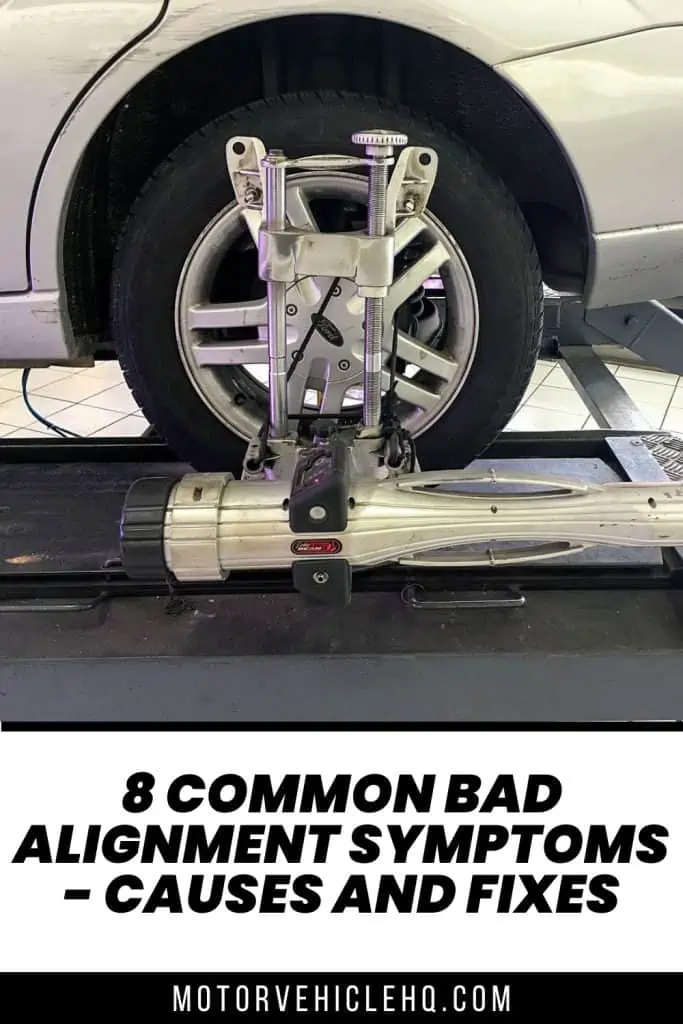
Wheel alignment of a Ford Focus by Mike Peel / CC BY-SA 4.0

Jim Wicks is the founder of MotorVehicleHQ. With over two decades of experience in the automotive industry and a degree in Automotive Technology, Jim is a certified car expert who has worked in various roles ranging from a mechanic, car dealership manager, to a racing car driver. He has owned more than 20 cars over the past 15 years. Ask him about any vehicle you see on the road and he can tell you the make, model and year. He loves the aesthetics of all things cars, and keeps his vehicles in pristine condition.
In his free time, Jim enjoys getting his hands dirty under the hood of a classic car or taking long drives along the country roads. His favorite car? A 1967 Shelby GT500, a true classic that, according to Jim, “represents the pure essence of American muscle.”
